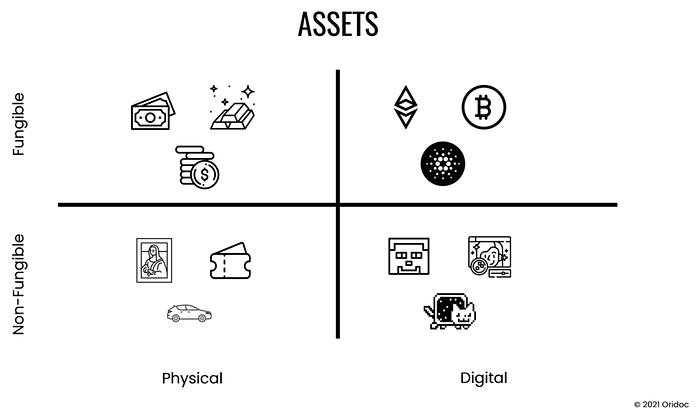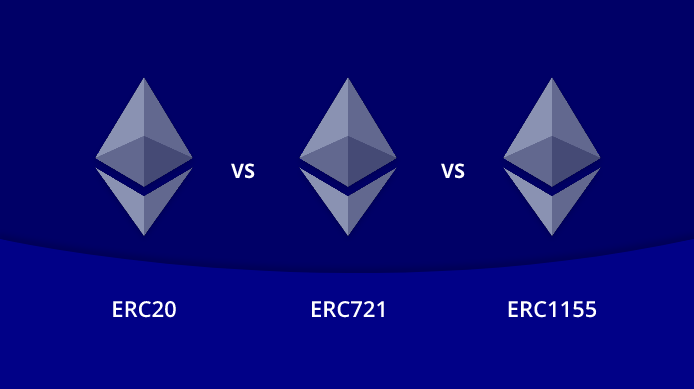Non-Fungible Tokens (NFTs) took the world by storm in 2021, and the hype around them doesn’t seem to be weakening. But behind the spotlight, a new type of tokenized asset…

Non-Fungible Tokens (NFTs) took the world by storm in 2021, and the hype around them doesn’t seem to be weakening. But behind the spotlight, a new type of tokenized asset is emerging, namely, Semi-Fungible Tokens (SFT). SFTs are much more adaptable than both fungible and non-fungible tokens. They combine the features of these two assets so they resolve certain gaps and create new opportunities for businesses and individuals.
Learn about the differences between NFTs and SFTs below, and why we think SFTs are the next big thing.
Fungible Tokens vs. Non-Fungible Tokens
When you buy cryptocurrencies, you buy so-called fungible tokens. These aren’t unique, so they are interchangeable and you can also divide them into parts. For example, you can exchange one Bitcoin (₿) for another, and you can also buy/sell a part of it. It’s the same with fiat money like the US dollar or the Euro. You can easily exchange a €100 note with another one.
Non-fungible tokens (NFTs), on the other hand, cannot be divided and have certain identifiers that make them unique, the metadata. These are artworks like paintings, music, photos, etc. or collectibles, or even digital real estate.
A cinema ticket which is unique in terms of rows and seats. You cannot divide it nor can you exchange it for another one without a change in its characteristics, namely, the location of the seat. In other words, NFTs are cryptographic tokens that represent a unique digital or physical asset.
NFTs are created and stored on the blockchain. This means that each NFT also serves as a verifiable proof of authenticity that cannot be modified or erased. When you own an NFT, your ownership is recorded on the blockchain.
The industries that have been most eager to adopt NFTs are the art, music, gaming and luxury sectors. The reason why is simple. For artists, they provide opportunities to sell their art directly to consumers. Art fans get the chance to become owners of a piece of art at a reduced cost without intermediaries. For gamers, they are a mechanism to own and profit from in-game assets. There’s also a great number of people who view them as a form of investment.

Semi-Fungible Tokens: What They Are and How They Work
Semi-fungible tokens (SFTs) have the characteristics of both fungible and non-fungible tokens and they have a life cycle.
Let’s take a real-world example.
You’re in a comics store with a friend, and you both buy the latest issue of the Spiderman comics. While those comics are under their blister, they are perfectly identical and fungible. Once you and your friend each bought a copy and removed them from the blister protection, the characteristics of the comics start evolving. Each time you read your comic, it is deteriorating. While you and your friend bought the same comic at the same time, those comics aren’t the same anymore, they became non-fungible while initially being semi-fungible.
SFTs are even more than that. As we said, they have a life cycle: they are initially fungible, but they can become non-fungible, and then fungible again, so the cycle can be repeated. To explain this, we’ll take an example from the metaverse gaming field where SFTs are the most widespread currently. SFTs basically make it easier to trade fungible in-game currency for non-fungible collectibles like cards in a trading card game.
The best thing about ERC-1155 is that the smart contracts using this standard can manage fungible, semi-fungible, and non-fungible at the same time and even pack them into a single transaction. This is possible thanks to Ethereum’s ERC-1155 standard developed by the Enjin team, which allows incredible flexibility. Moreover, a single smart contract can govern an unlimited number of SFTs.
Why You Should Care About SFTs
SFTs come with many advantages for the crypto and NFT markets. Two of them stand out immediately: they reduce costs and transaction time. Anyone involved in these markets knows these two factors can make or break a deal.
Even if you can build a script or integrate a function in your smart contract that allows to bulk send ERC-721 NFTs, every NFT has to be sent in a separate transaction, depending on the blockchain you use or the amount of NFT sent, this will drastically increase the transaction costs. Also, if you have to send thousands of units it will take quite some time until the blockchain processes all the transactions.
SFTs are most widespread in the gaming sector at the time of writing. At the same time, they are also becoming more in demand in marketplaces, decentralized applications (dApps) and metaverse environments. Their limitation can currently be attributed to the revolutionary technology behind them: you can mint SFTs on the Ethereum network utilizing the EIP-1155 standard which is a synthesis of the fungible ERC-20 and non-fungible ERC-721 standards.

As with all disruptive technology, it may take some time for businesses to implement it, but the potential of SFTs to add value to the emerging metaverse and the decentralized world of Web 3.0 is truly immense.
SFTs & NFTs in AlphaVerse
At AlphaVerse, we make the best use possible of each and every innovation in the crypto world. Thus, we’re using the strength of both NFTs and SFTs in our metaverses. For instance, in the MetaWorld, the multiplayer mode of MetaCoaster, we’ll use both NFTs and SFTs.
Firstly, all plots of land in the MetaWorld are pure NFTs. Each land has a set of coordinates depending on its location and is included in one of the districts we created. Secondly, the buildings that players can place on their plot of land to build the amusement park of their dreams (i.e attractions and shops) are SFTs. Thanks to the ERC-1115 standard we’re able to offer a wide variety of buildings, while always having a fixed supply of them and without the burden of having to mint each and every unit separately as it’s the case with the ERC-721 standard.

This combination of ERC-721 and ERC-1115 crypto assets gives us the utmost flexibility to provide the best play-to-earn experience possible inside our various universes.
To stay in the know of what’s coming, sign up for the AlphaVerse newsletter and be the first to learn about new opportunities, new universes, and how you can take part











